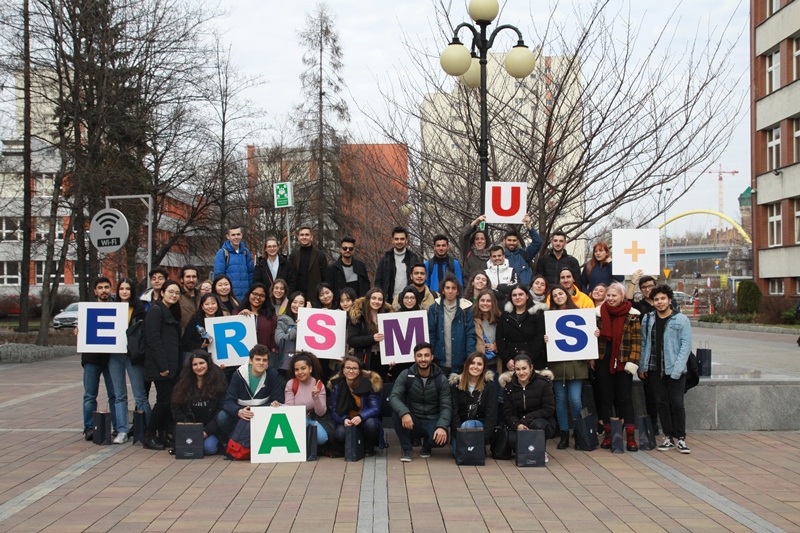Erasmus Day in Poland is celebrated on 25 November. It is a great opportunity to learn about the Erasmus+ programme and its benefits.
What is the Erasmus+ programme?
The Erasmus+ programme is the continuation of European educational programmes realised by the European Union since 1998.
The Erasmus+ enables for, among others, engaging in international educational exchange on a higher education level, scholarship trips for students as a part of their studies at foreign partner universities or complete student internship abroad. Additionally, the programme supports educational and training trips for university employees
Participation in the Erasmus is an experience that connects students regardless of their country of origin so they create a transnational community. Everything proves that soon every hundredth person among all inhabitants of countries in the programme will realise a part of their studies or internship within the Erasmus+ programme.
The Erasmus+ in numbers
- In 2007, over 1 million students from all around the world participated in the programme, whereas in 2013, it was 3 million students.
- Throughout 23 years, the University of Silesia has realised near 5.500 student trips and near 3.500 employee trips.
- The entire budget of the Erasmus+ programme for 2021–2027 amounts to € 26.200.000.
What does the Erasmus+ programme include?
Within the programme, you can complete a part of your studies at a foreign partner university, with which a cooperation agreement has been made for a given field of study. Currently, the University of Silesia has entered into over 700 agreements with 450 partner universities in 47 countries of the programme and partner countries. Some agreements cover only several activities.
Within the Erasmus+ programme, the University of Silesia has entered into cooperation with all the partner universities of the Transform4Europe: the Estonian Academy of Art in Tallinn, the Saarland University, University of Alicante, Sofia University St. Kliment Ohridski, the University of Trieste, and the Vytautas Magnus University in Kaunas.
The Erasmus+ programme allows completing student internships abroad. Students or fresh graduates can find internships at almost every institution in the countries of the EU, European Economic Area as well as Macedonia, Serbia, and Turkey, which runs a business that matches with a trainee’s study programme. Only institutions of the EU and managing European Union programmes are excluded.
Within the educational exchange, university employees can complete trips to conduct classes in partner universities or take part in various trainings (e.g. any form of professional training, study visit, job shadowing).
Information on registration
368 students of the University of Silesia qualified to complete a part of their studies within the Erasmus+ programme in the academic year 2021/2022.
The admission process for the next academic year will be announced in the summer semester.
Currently, you can apply for student internships abroad or educational and training trips for academics.
Students participating in the programme will receive funding of € 450 – € 700 per month, depending on the type of mobility and country of stay. People who have difficult access to mobility can receive additional funding.
You can take part in the exchange multiple times. In the case of students, on each level of studies, there are 12 months (24 months in the case of long-cycle studies) you can spend on a scholarship in selected countries.
Detailed information on educational exchange programmes within the Erasmus+ for students and employees of the university, admission process, rules and regulations, and procedures can be found on the Erasmus+ university website.
International students holding ERASMUS+ sign | Photo by the Media Communication Centre






